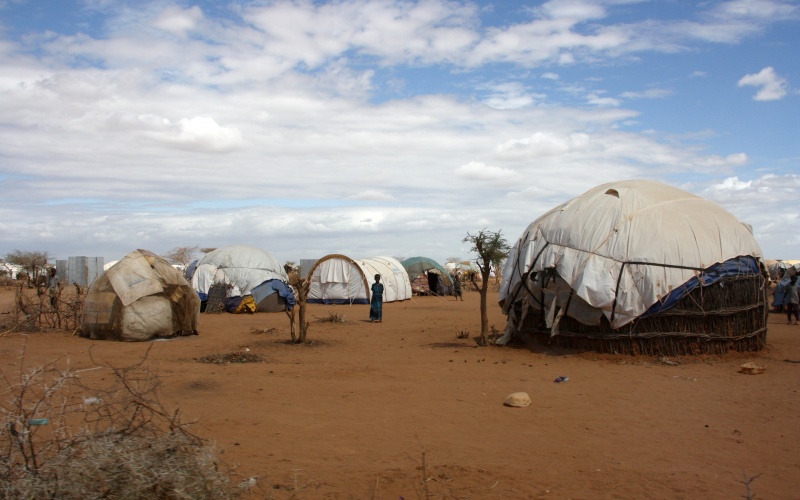Date: Wed, 29 Jun 2016 15:46:21 +0200
Closing the Dadaab refugee camp will not solve Kenya’s security problems, and will likely lead to a humanitarian crisis and increased instability in Somalia.
In May the Kenyan government announced that it would close the Dadaab camp, the world’s largest refugee settlement. Kenya’s Vice President, William Ruto, defended the decision at last month’s World Humanitarian Summit in Turkey, stressing that the camp “was a security threat, a haven for terrorism and conduit of contraband goods as well as a danger to the environment.”
The move to close Dadaab has been greeted with sharp criticism from humanitarian organizations and Western governments. Many argue that forcibly sending hundreds of thousands of Somali refugees to a country that is besieged by war is a violation of international law. After all, Kenya is a signatory to the 1951 refugee convention, which outlines the obligations of countries to protect people fleeing persecution.
In addition to what would be a humanitarian disaster and a logistical nightmare, there are growing concerns that by returning Somali refugees to a place that lacks basic services and with few economic opportunities, Kenya will make it easier for al-Shabab to recruit new fighters, and will inadvertently bolster the very organization it is fighting against.
The world’s largest refugee camp
Established in 1992 in response to an influx of Somalis fleeing war, Dadaab has since become the world’s largest camp, home to over 350,000 largely Somali refugees. The sprawling settlement is now unofficially the third biggest city in Kenya – after Nairobi and Mombasa. For thousands of young Somalis in the camp, Dadaab is the only home they have ever known. The refugees are restricted to the settlement and are not allowed to seek employment outside the camp; they rely on dozens of aid organizations that provide health services, education facilities and food, among other forms of assistance.
Over the years the ever-expanding camp has become a magnet for business and trade and is largely responsible for driving the economy of Kenya’s northeastern region. In addition to providing employment to thousands of people, including Kenyans, Dadaab is also a major source of foreign exchange for Kenya, racking in nearly $100 million annually, and many aid organizations buy food and numerous other supplies from Kenyan businesses.
But Dadaab has increasingly become a headache for the Kenyan government. Located close to the porous border between Kenya and Somalia, Kenyan officials claim that al-Shabab, the al-Qaeda affiliated militant group, uses the camp as both a hideout and a place to coordinate attacks against Kenyans. While evidence linking Dadaab to recent terrorist attacks in Kenya is disputed, there is no doubt that al-Shabab is an ever-present threat to Kenya’s security. Last year the group carried out its most brutal attack on the East African country – killing up to 150 students at Garissa University in northern Kenya. And in 2013 the same group murdered 70 people at the Westgate Shopping Mall in Nairobi. The attacks are apparently retribution for the country’s involvement in Somalia’s civil war.
Kenyan presence in Somalia a key issue
Since 2011 Kenya has maintained troops in Somalia. It is part of the African Union Mission In Somalia (AMISOM), a force whose objective is to drive al-Shabab out of Somalia and restore stability to a country that has been devastated by a protracted civil war. While the AU force has had some successes against militants – repelling them from key cities such as Mogadishu – al-Shabab remains formidable, especially in its ability to carry out suicide attacks in Somalia and beyond.
Al-Shabab’s continued presence in Somalia – albeit somewhat diminished – poses a real threat to the refugees who will be returned. Many will face the same dangers from which they had escaped. Equally worrying, al-Shabab might see the return of hundreds of thousands of jobless and desperate people as an opportunity to increase their numbers. The vast majority of refugees living in Dadaab are under the age of 20, making them an attractive recruitment target for the militants.
It is difficult to see how closing Dadaab will stem terrorist attacks on Kenya. Al-Shabab will remain a lingering threat as long as the militants are active in Somalia. Kenya is better off continuing to work with the AMISOM force to ensure that stability returns to its troubled neighbor, while still affording protection to those who desperately need it.
Kenya struggling to cope
Kenya has played an outsized role in hosting hundreds of thousands of people fleeing persecution, with over half a million refugees currently live in the country. And too often, the international community has not followed through on funding promises to help Kenya manage the refugee inflows. This might partly explain why Kenyan leaders are increasingly taking a tougher stance.
Kenya’s recent vow to close Dadaab is not the first time it has threatened to put an end to the camp. It backtracked on the same proclamation last year after immense international pressure and $45 million in additional aid from the United States. However, Kenya appears determined to move forward with the camp closure this time around. With looming national elections, the government is keen to project to its supporters that it is best positioned to secure the country. It has already earmarked $10 million to fund the return of refugees, which is set to begin in November. But given the enormousness of the task, it is doubtful that the tight deadline can be met.
What is clear, however, is that by sending people back to a country still ravaged by war, Kenya will not only create a humanitarian disaster, it might also empower and even fuel more attacks from the very militants it has been battling over the last few years.
